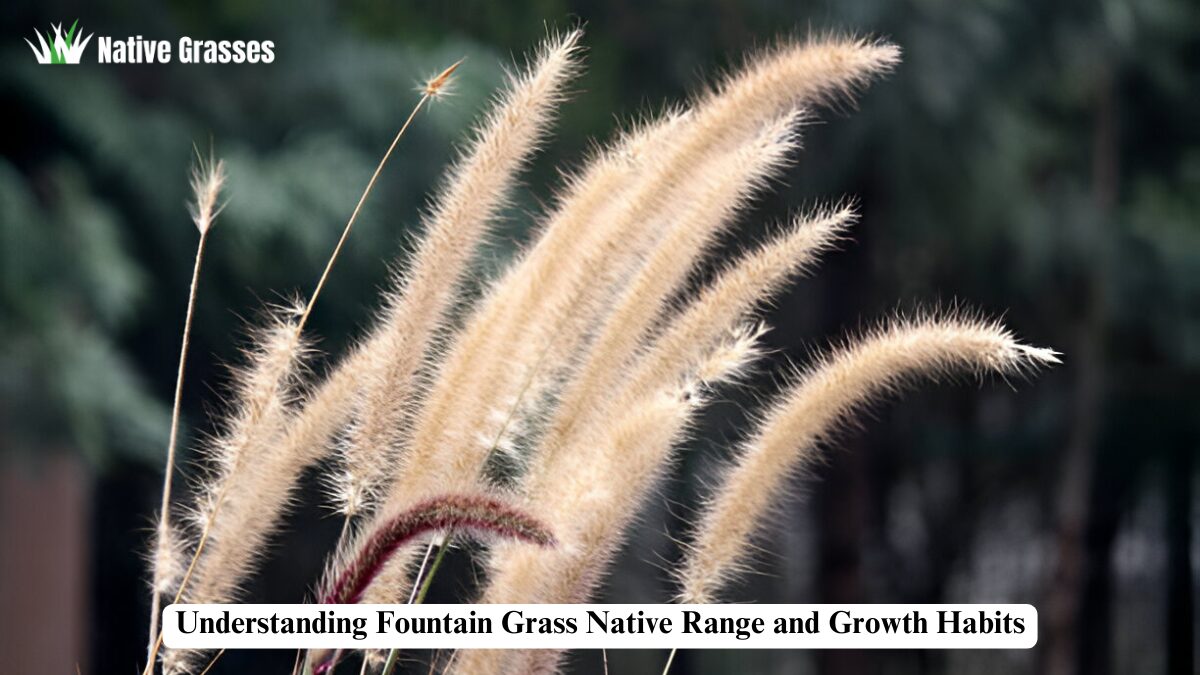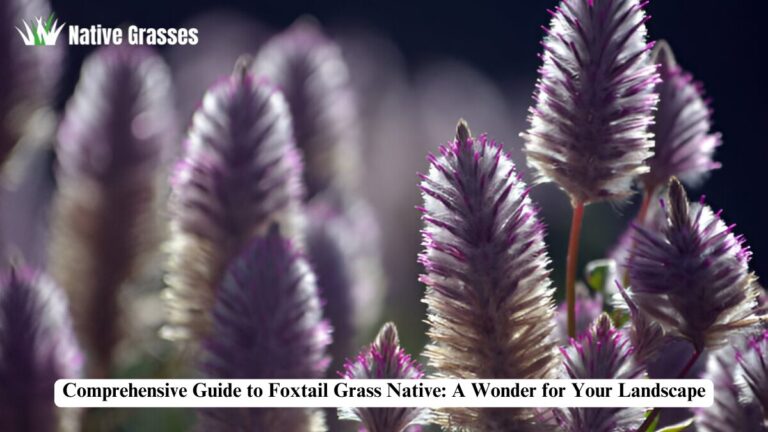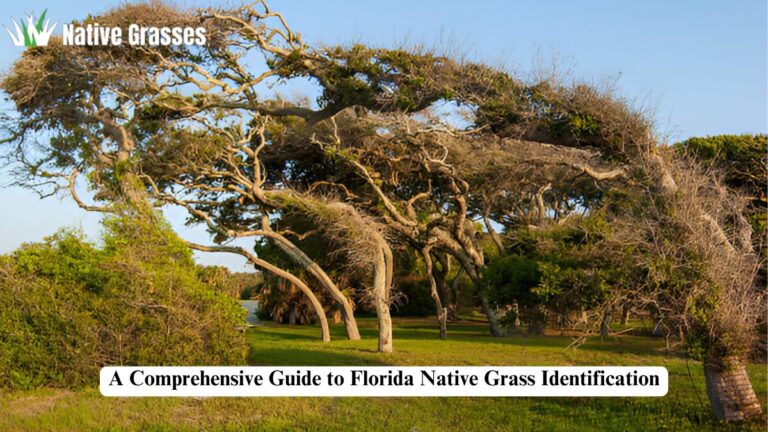Understanding Fountain Grass Native Range and Growth Habits

Fountain grass, a visually striking ornamental grass known for its arching, plume-like flower heads, is a garden favorite and an integral part of many ecosystems. Understanding the native range of fountain grass is key to appreciating its role in both natural habitats and human-designed landscapes.
In this article, we’ll delve into the geographic spread of fountain grass, its ecological importance, and how to cultivate and maintain it in different climates. By the end of this post, you’ll have a deep understanding of where fountain grass thrives naturally and how you can successfully grow it in your own space.
What Is Fountain Grass?
Before diving into its native range, let’s first take a quick look at fountain grass itself.
Fountain grass (Pennisetum setaceum) belongs to the Poaceae family and is native to parts of Africa and Asia. It is a perennial grass that’s highly valued for its graceful, arching leaves and vibrant flower heads. Known for their feathery texture, the flowers bloom in shades of pink, white, or purple, adding texture and movement to gardens.
Key Characteristics:
- Height: Fountain grass typically grows between 3 to 5 feet tall.
- Flowers: Feathery, plume-like flower heads appear in late summer to fall.
- Leaves: Arching, long, green to purple-tinged leaves.
Its popularity is due to its aesthetic appeal and adaptability to a range of climates.
Fountain Grass Native Range
Fountain grass originates from various parts of the globe, predominantly in tropical and subtropical regions. It’s important to understand the native range of fountain grass to know where it thrives naturally and the conditions it needs to grow well.
Native Range in Africa and Asia
Fountain grass is native to areas of Africa and Asia, where it grows in a variety of ecosystems. It is commonly found in regions with warm temperatures, plenty of sunlight, and well-drained soil. Here’s a more detailed look at where fountain grass naturally grows:
- Northern Africa: Fountain grass is native to North African countries like Egypt, Sudan, and Morocco. In these regions, it thrives in arid climates, making it particularly well-suited for xerophytic landscapes.
- Sub-Saharan Africa: Fountain grass is also found in sub-Saharan regions, where it contributes to the natural biodiversity of grasslands and savannas.
- Middle East and Central Asia: In countries like Iran, Pakistan, and India, fountain grass grows in arid to semi-arid conditions. The plant can survive in dry, hot climates with infrequent rainfall.
- Southeast Asia: Fountain grass is also found in parts of Southeast Asia, where it typically grows in tropical climates, including areas in Thailand and Vietnam.
The plant’s versatility in terms of climate and soil conditions helps it spread naturally in these areas.
Adaptability Beyond Its Native Range
Though fountain grass is native to certain parts of Africa and Asia, it has been introduced to many other regions around the world, particularly in the United States. It’s now widely cultivated as an ornamental grass in gardens and landscapes. However, its spread outside its native range has raised concerns in some areas, as fountain grass can become invasive in certain ecosystems.
Why Fountain Grass Thrives in Its Native Range
Fountain grass’s ability to thrive in its native range can be attributed to several factors. Let’s take a closer look at these conditions:
Climate
The native range of fountain grass encompasses regions with warm, sunny climates. These areas often experience hot summers and mild winters, with temperatures ranging from 70°F to 100°F (21°C to 37°C). Fountain grass thrives in these conditions, as it is highly drought-tolerant and can handle long periods of heat.
Soil Requirements
Fountain grass prefers well-drained soils, which are abundant in its native regions. The plant is highly adaptable, able to grow in poor soils and withstand dry conditions, making it perfect for arid landscapes.
Watering and Rainfall
In its natural habitat, fountain grass experiences limited rainfall, typically falling during the summer monsoon season. This drought-tolerant grass has adapted to withstand dry spells, making it a low-maintenance option for regions with unpredictable rainfall.
How Fountain Grass Is Used in Landscaping
Fountain grass’s native range may be far away from your garden, but its appeal has made it a popular choice for landscapes worldwide. Understanding its native origins can help you cultivate it in ways that reflect its natural growing habits.
As an Ornamental Grass
Fountain grass’s attractive flowers and graceful foliage make it a favorite among gardeners. It’s commonly used in borders, mass plantings, and containers, providing texture and movement to garden designs.
Erosion Control
Because of its dense root system, fountain grass is also used for erosion control in areas where soil stability is a concern. In its native range, it helps anchor the soil and prevent wind and water erosion, particularly in dry, rocky areas.
As a Ground Cover
In regions with suitable climates, fountain grass can be used as a low-maintenance ground cover. Its spreading habit and drought tolerance make it an excellent choice for xeriscaping projects, reducing the need for irrigation.
How to Grow Fountain Grass
Whether you’re looking to recreate its natural habitat in your garden or simply add a bit of elegance to your landscape, fountain grass is relatively easy to grow. Below are some tips on how to grow this beautiful grass.
Soil and Planting Conditions
Fountain grass thrives in well-drained soils, with a slightly acidic to neutral pH. The plant prefers full sun, so be sure to plant it in an area that gets at least 6 hours of sunlight a day. To give it the best start, plant it in a location that has good air circulation, which will help prevent fungal diseases.
Watering and Fertilization
While fountain grass is drought-tolerant once established, it still benefits from regular watering, especially during hot summer months. Water it deeply, ensuring the soil stays consistently moist, but not soggy. Avoid overwatering, as this can lead to root rot.
Fountain grass doesn’t require heavy fertilization. A light application of balanced fertilizer in the spring is usually enough to keep it healthy and growing.
Pruning and Maintenance
Fountain grass doesn’t need a lot of attention but will benefit from occasional pruning to keep its shape and remove dead or damaged foliage. Cut back old growth in late winter or early spring before new growth begins.
Fountain Grass as an Invasive Species
In some parts of the world, particularly in the United States, fountain grass has been classified as an invasive species. It’s important to monitor its growth, especially if it’s planted in non-native areas. When fountain grass spreads beyond its intended area, it can outcompete native species, disrupting local ecosystems.
Fountain Grass and Fire Risk
In certain regions, fountain grass’s dry foliage can increase the risk of wildfires. The plant’s natural habitat includes areas prone to wildfires, but in suburban areas, its accumulation of dry material can pose a significant fire hazard.
Fountain Grass Varieties and Cultivars
Over time, several fountain grass cultivars have been developed, each with its unique characteristics. Some common varieties include:
- Pennisetum setaceum ‘Rubrum’: Known for its deep burgundy-red foliage.
- Pennisetum setaceum ‘Skyrocket’: A taller variety with upright flower heads.
- Pennisetum setaceum ‘Little Bunny’: A compact variety suitable for smaller gardens.
These varieties can be chosen based on the specific growing conditions of your garden, such as height requirements, color preferences, and overall size.
Conclusion
Fountain grass is a stunning and versatile plant that originates from warm climates in Africa and Asia. Its adaptability to different environments, coupled with its ornamental value, has made it a popular choice for gardeners around the world. Whether used for aesthetic purposes, erosion control, or as a drought-tolerant ground cover, fountain grass brings beauty and function to any landscape. By understanding its native range and growing habits, you can cultivate fountain grass successfully, even outside its original habitat.
The next time you add fountain grass to your garden, you’ll appreciate it not only for its beauty but also for its deep connection to the natural world.
FAQs
What is the native range of fountain grass?
Fountain grass (Pennisetum setaceum) is native to parts of Africa and Asia, particularly in regions with warm, sunny climates like North Africa, Sub-Saharan Africa, the Middle East, and parts of Southeast Asia. It thrives in arid and semi-arid environments with limited rainfall and well-drained soil.
Can fountain grass grow in cold climates?
Fountain grass is best suited to warm climates and may not survive in cold regions with harsh winters. However, in colder areas, it can be grown as an annual or in containers that are brought indoors during the winter. It’s important to protect fountain grass from freezing temperatures as it is not frost-tolerant.
How much sunlight does fountain grass need?
Fountain grass thrives in full sun, requiring at least 6 hours of sunlight a day for optimal growth. It prefers bright, direct sunlight to produce its signature feathery flower heads and maintain healthy foliage.
How often should I water fountain grass?
While fountain grass is drought-tolerant once established, it does need regular watering during the growing season, especially in hot weather. Water it deeply but allow the soil to dry between waterings. Avoid overwatering, as this can lead to root rot.
Does fountain grass need special soil?
Fountain grass prefers well-drained soil with a slightly acidic to neutral pH. While it’s adaptable and can grow in poor soils, ensuring good drainage is essential for its health. It can tolerate a variety of soil types, as long as they are not waterlogged.
Is fountain grass invasive?
Yes, in some regions outside its native range, such as parts of the United States, fountain grass has become invasive. It can outcompete native plant species and disrupt local ecosystems. If you’re planting fountain grass in non-native areas, it’s essential to keep it under control and monitor its growth.
How do I prune fountain grass?
Fountain grass requires minimal pruning. To maintain its shape, remove any dead or damaged leaves in the fall or early winter before new growth begins. In late winter or early spring, you can cut back the entire plant to the ground to allow fresh growth to emerge.
Can fountain grass be grown in containers?
Yes, fountain grass can be grown in containers, making it a great option for patios, balconies, and smaller spaces. When planting in containers, ensure the pot has good drainage to prevent water from accumulating at the bottom. Fountain grass in containers will also need more frequent watering than plants grown in the ground.
What are the benefits of fountain grass in landscaping?
Fountain grass is valued for its aesthetic appeal, including its graceful, plume-like flower heads and arching foliage. It’s also used for erosion control, drought-tolerant landscaping, and as a ground cover. Its low-maintenance nature makes it a popular choice in xeriscaping and sustainable gardening.
Is fountain grass toxic to pets?
No, fountain grass is generally non-toxic to pets. However, it’s always a good idea to keep an eye on pets to make sure they don’t ingest large amounts of any plant material, which could cause mild gastrointestinal discomfort.






